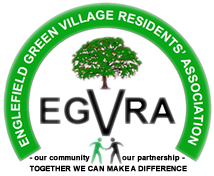St. Michael & All Angels church history
St Michael & All Angels is in Church Lane, a quiet cul de sac just to the north of the Sunninghill roundabout on the A329.
Sunninghill is an ancient parish, originally a Saxon settlement in Windsor Forest. (The Sunnings were a Saxon tribe which settled in various places in the Thames Valley.) The surrounding parishes were carved out of Sunninghill in the 19th Century. Our present parish stretches East-West from the Great Park to the Race Course, and North-South from Cheapside to Bagshot Road.
The present Church is the third on the site, and this misleading inscription by the west door describes the second one as the 'original church'!
The Saxon Church may have been founded in about 890 AD. (The historical evidence, and much detail about the church's subsequent history, is discussed in a splendid book - "Cheapside in the Forest of Windsor" produced as part of the local Millennium celebrations by an historian, Christine Weightman, and it is available from Cheapside Publications, Heronsbrook Cottage, Ascot) .
In the Churchyard near the Vestry is a yew tree - perhaps the one remaining from a circle of yews surrounding the Saxon church. It is thought to be 1200 years old.
The church was rebuilt around 1120, and this Norman church was to be at the centre of the community for 700 years
King John gave the Church by charter to the Broomhall Priory, together with the right to appoint the priest (which is called the advowson, or patronage). The Priory for a time had much land and influence in the area. It was closed in 1524, and all its possessions, including the patronage of the Living of Sunninghill were subsequently given to St John's College, Cambridge.
In 1779 the Church Green adjoining St Michaels, upon which stood a Parish Room, was sold to the owner of the Cedars. The money from the sale was used by the Reverand Thistlewaite to make alterations to the Church. There were some unsuccessful extensions in 1808, and in 1827 the Norman Church was demolished except for its little Chancel.
In 1888, relatives of the Holloways build an entire new East End to the Church, the south-east corner being the Chapel. It was designed by W.H.Crossland (F.R.I.B.A.) who was the architect of the Royal Holloway College and the Sanatorium. The Church had no resources for its social life, informal meetings,etc, so in 1984 we built a Church Hall. It already seems far too small !
Until 1861, music came from a barrel organ with a repertoire of 8 hymns. In 1899 the present organ was installed. For forty years we had the services of Mr Tom Reed, a blind organist of extraordinary abilty. Now we are most fortunate to have as Organist and Director of Music, Mr Harry Macey - who is an extremely experienced church musician, whose family have deep local roots.
The Parish is geographically divided with communities in Sunninghill and Cheapside, but many church members come from outside the boundaries of the parish. The community is mixed with a few old local families, many retired people, young commuting executives and many children. In the Churchyard lie many notable personalities; they include Jane & Thomas Holloway, the Rt Hon. Gerald Richard Fitzpatrick of Beechgrove House whose tomb is a listed monument, Rear Admiral Sir Home Riggs Popham under whom Nelson served, and Augustus Schultz J.P., who was later an owner of The Cedars



 Englefield Green
Englefield Green